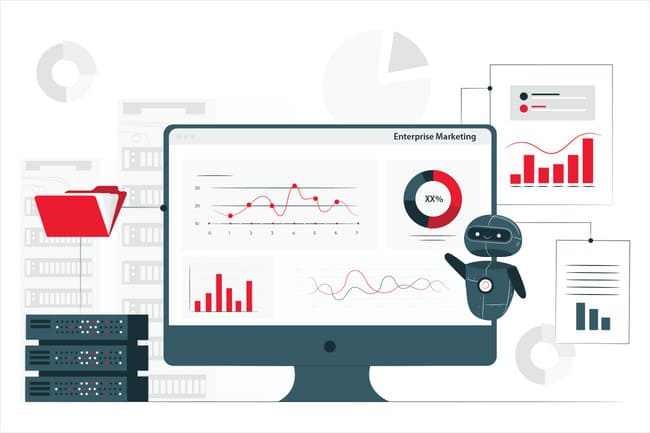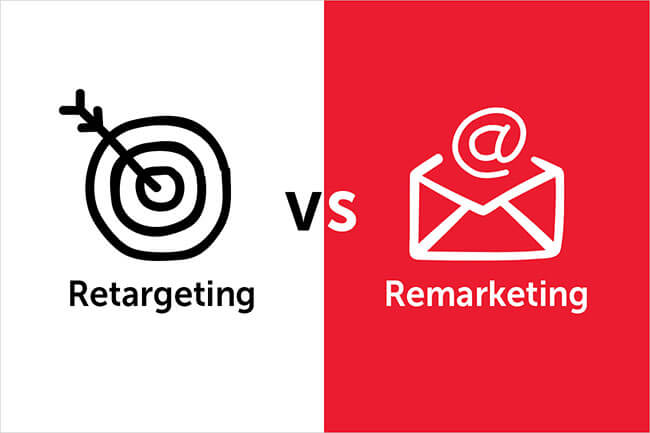So, what is data privacy?
Data privacy refers to the right of individuals to control and protect their personal information, ensuring that it is collected, processed, and stored in a manner that respects their confidentiality and security. It encompasses the principles, regulations, and practices aimed at safeguarding sensitive data from unauthorized access, use, and disclosure. Data privacy involves the collection and management of personally identifiable information (PII), such as names, addresses, social security numbers, financial details, and online activities.
The increasing digitization of personal information and the widespread use of technology have raised concerns about the potential misuse and exploitation of data. Therefore, data privacy measures include obtaining informed consent for data collection, implementing strong security measures, providing individuals with transparency and control over their data, and adhering to legal and ethical obligations to protect privacy. Ensuring data privacy is crucial in maintaining trust between individuals, organizations, and society as a whole.
What Is First-Party Data?
First-party data refers to information collected directly from individuals or customers by an organization or business entity. It is data that the organization has obtained directly from its own interactions and relationships with individuals, typically through its website, mobile apps, customer surveys, or other direct interactions. First-party data is considered highly valuable because it is proprietary and unique to the organization that collects it. It can include various types of data such as demographic information, purchase history, browsing behavior, preferences, and interactions with the organization’s products or services.
First-party data provides organizations with insights into their customers’ behaviors, interests, and needs, allowing them to personalize marketing efforts, improve customer experiences, and make data-driven decisions. It is often considered more reliable and accurate compared to third-party data, as it comes directly from trusted sources. Additionally, organizations have more control over the collection, storage, and use of first-party data, which can help ensure compliance with privacy regulations and build stronger relationships with customers based on transparency and trust.
The Value of First-Party Data
First-party data holds significant value for organizations due to several reasons:
- Accuracy and Reliability: First-party data is collected directly from customers or users, making it highly accurate and reliable. It provides organizations with firsthand insights into customer behaviors, preferences, and interests, enabling them to make more informed decisions.
- Personalization and Customer Engagement: With first-party data, organizations can personalize their marketing efforts, tailoring messages, and experiences to individual customers. This leads to enhanced customer engagement, increased relevance, and improved customer satisfaction.
- Improved Targeting and Segmentation: First-party data enables organizations to segment their customer base effectively. By understanding customer demographics, purchase history, and preferences, businesses can create targeted marketing campaigns and deliver relevant content to specific customer segments.
- Enhanced Customer Experience: Leveraging first-party data allows organizations to offer personalized experiences to their customers. By understanding customer needs and preferences, companies can provide tailored recommendations, offers, and support, resulting in improved customer satisfaction and loyalty.
- Data Monetization Opportunities: First-party data can also create opportunities for organizations to monetize their data assets. They can choose to share anonymized and aggregated data with trusted partners or advertisers, enabling targeted advertising and collaborations while generating additional revenue streams.
- Regulatory Compliance and Trust: Collecting and utilizing first-party data gives organizations more control over data privacy and compliance with regulations like the General Data Protection Regulation (GDPR) and the California Consumer Privacy Act (CCPA). Respecting privacy rights and building trust with customers fosters long-term relationships and brand loyalty.
Adapting Your Digital Marketing Strategy in The Privacy World
Adapting digital marketing strategies in a privacy-focused world is essential for organizations to maintain effective and ethical marketing practices.
Here are some key considerations:
- Transparency and Consent: Prioritize transparency in data collection and usage. Obtain explicit consent from users before collecting their data, clearly explaining how it will be used. Implement user-friendly consent mechanisms and allow users to easily manage their preferences.
- Embrace First-Party Data: Shift towards leveraging first-party data as a primary resource for targeting and personalization. Develop strategies to collect and analyze first-party data directly from customers, ensuring compliance with privacy regulations and building trust.
- Contextual Targeting: Focus on contextual targeting, which delivers relevant content based on the context of the user’s current browsing session rather than relying heavily on individual user data. This approach reduces reliance on personal data while still delivering targeted messaging.
- Privacy-Centric Analytics: Use privacy-centric analytics tools that prioritize user anonymity and data protection. Implement techniques like differential privacy, which adds noise to aggregated data to protect individual identities while still providing valuable insights.
- Content Marketing and Value Exchange: Emphasize content marketing and value exchange to engage users without relying heavily on personal data. Create compelling and valuable content that attracts and retains users based on their interests and needs, fostering loyalty and engagement.
- Collaboration and Partnerships: Explore collaborations and partnerships that respect privacy principles. Work with trusted partners who uphold similar privacy standards and ensure that data-sharing practices are compliant and transparent.
- Compliance with Regulations: Stay informed and compliant with privacy regulations, such as GDPR, CCPA, and other relevant laws in your target markets. Regularly review and update privacy policies and practices to align with evolving regulations.
- Privacy Education and Communication: Educate your marketing team and stakeholders about privacy best practices. Communicate your commitment to privacy and data protection to customers, emphasizing the steps taken to safeguard their data.
- Privacy by Design: Implement privacy-by-design principles into your digital marketing strategies. Consider privacy implications from the early stages of campaign planning and ensure privacy is embedded in the design and execution of marketing initiatives.
- Monitor Emerging Trends: Stay updated on emerging privacy trends, technologies, and consumer preferences. Adapt your strategies accordingly to address evolving privacy concerns and align with industry best practices.
Collecting And Managing First-Party Data
Collecting and managing first-party data in the context of cookieless digital marketing is becoming increasingly important as privacy regulations and browser changes limit the use of third-party cookies.
Here are some key considerations:
- Data Collection Methods: Implement strategies to collect first-party data directly from users. This can include sign-ups, registrations, preference centers, surveys, and feedback forms. Encourage users to willingly provide their information in exchange for personalized experiences or exclusive content.
- Website and Mobile App Optimization: Optimize your website and mobile apps to gather first-party data. Use consent banners or pop-ups to inform users about data collection and seek their consent. Design user-friendly interfaces that make it easy for users to provide and manage their preferences.
- Consent Management Platforms (CMPs): Utilize CMPs to obtain user consent for data collection and cookie usage. CMPs allow users to customize their privacy settings, giving them control over their data. Implement a CMP that complies with relevant regulations and provides transparency to users.
- Customer Relationship Management (CRM) Systems: Leverage CRM systems to store and manage first-party data. Centralize the data collected from various touchpoints, such as website forms, customer interactions, and purchase history. Ensure proper security measures are in place to protect the data.
- Data Security and Compliance: Implement robust security measures to protect the collected first-party data. Adhere to privacy regulations, such as GDPR and CCPA, and ensure data is stored and processed securely. Conduct regular audits to identify and address any data security vulnerabilities.
- Personalization and Segmentation: Utilize first-party data for personalized marketing campaigns. Analyze the data to understand user preferences, behaviors, and interests. Segment your audience based on these insights to deliver tailored messaging and offers.
- Contextual Targeting and Content Marketing: With the decline of third-party cookies, focus on contextual targeting and content marketing. Serve ads or content based on the context of the webpage rather than individual user data. Align your messaging with the content users are engaging with to increase relevancy.
- Data Partnerships and Collaborations: Explore data partnerships with trusted entities that align with your privacy principles. Collaborate with other organizations to share first-party data in a privacy-compliant manner, enabling more effective targeting and personalization.
- Compliance Monitoring and Updates: Stay informed about the evolving privacy landscape and adapt your data collection and management practices accordingly. Regularly review and update your privacy policy, terms of service, and data handling practices to ensure compliance with changing regulations and industry standards.
- Communication and Transparency: Clearly communicate your data collection and usage practices to users. Provide transparency on how their data is being used and the benefits they can expect from sharing their information. Build trust by being open about your privacy measures and respecting user choices.
Leveraging First-Party Data for Personalization
Leveraging first-party data for personalization allows organizations to deliver highly targeted and tailored experiences to their customers.
Here’s how you can effectively utilize first-party data for personalization:
- Data Collection and Segmentation: Collect and analyze first-party data from various touchpoints such as website interactions, customer profiles, purchase history, and preferences. Segment the data based on relevant attributes like demographics, behavior, interests, and purchase patterns.
- Customer Profiles and Segments: Build detailed customer profiles by consolidating and organizing first-party data. Create segments or personas based on common characteristics and behaviors to understand different customer groups better.
- Personalized Recommendations: Utilize first-party data to provide personalized product or content recommendations. Analyze users’ browsing or purchase history and use algorithms or machine learning to suggest relevant products or content that align with their preferences and interests.
- Dynamic Content Customization: Customize website or app content based on individual preferences or segment characteristics. Serve targeted messaging, promotions, or offers that resonate with users, increasing their engagement and conversion rates.
- Email Marketing Personalization: Leverage first-party data to personalize email marketing campaigns. Use data such as purchase history, browsing behavior, or demographic information to tailor email content, product recommendations, and offers based on each recipient’s interests.
- Retargeting and Remarketing: Utilize first-party data to retarget users who have previously interacted with your website or app. Show them personalized ads or content based on their past actions, encouraging them to return, complete a purchase, or engage further.
- Customer Journey Mapping: Map out the customer journey using first-party data to identify touchpoints and personalize interactions at each stage. Deliver relevant messages, content, or offers that guide customers smoothly through their journey, increasing their satisfaction and loyalty.
- Personalized Landing Pages: Create personalized landing pages based on user attributes or preferences. Tailor the content, messaging, and design to align with specific customer segments, providing a more personalized and relevant experience.
- Real-Time Personalization: Utilize first-party data in real-time to personalize experiences as users interact with your website, app, or other touchpoints. Display dynamic content, recommendations, or offers based on their current behavior, increasing engagement and conversions.
- Feedback and Iteration: Continuously collect feedback and analyze user responses to personalize experiences further. Monitor how users engage with personalized content and measure the impact on key metrics. Use this feedback to refine and iterate your personalization strategies.
Why Is First-Party Data Important?
First-party data holds significant importance for organizations due to several reasons:
- Accuracy and Reliability: First-party data is collected directly from customers or users, making it highly accurate and reliable. It provides organizations with firsthand insights into customer behaviors, preferences, and interests, enabling them to make more informed decisions.
- Personalization and Customer Engagement: First-party data allows organizations to personalize their marketing efforts, tailoring messages, and experiences to individual customers. This leads to enhanced customer engagement, increased relevance, and improved customer satisfaction.
- Improved Targeting and Segmentation: First-party data enables organizations to segment their customer base effectively. By understanding customer demographics, purchase history, and preferences, businesses can create targeted marketing campaigns and deliver relevant content to specific customer segments.
- Enhanced Customer Experience: Leveraging first-party data allows organizations to offer personalized experiences to their customers. By understanding customer needs and preferences, companies can provide tailored recommendations, offers, and support, resulting in improved customer satisfaction and loyalty.
- Data Monetization Opportunities: First-party data can also create opportunities for organizations to monetize their data assets. They can choose to share anonymized and aggregated data with trusted partners or advertisers, enabling targeted advertising and collaborations while generating additional revenue streams.
- Customer Insights and Retention: First-party data helps organizations gain deeper insights into their customers’ behaviors, preferences, and purchase patterns. This understanding allows them to proactively address customer needs, improve product offerings, and enhance customer retention strategies.
- Regulatory Compliance and Trust: Collecting and utilizing first-party data gives organizations more control over data privacy and compliance with regulations like the General Data Protection Regulation (GDPR) and the California Consumer Privacy Act (CCPA). Respecting privacy rights and building trust with customers fosters long-term relationships and brand loyalty.
- Long-Term Value and Ownership: First-party data is proprietary and unique to the organization that collects it. Unlike third-party data, which is often available to multiple companies, first-party data remains under the organization’s control, providing long-term value and ownership of valuable customer insights.
- Adaptability and Resilience: As privacy regulations evolve and third-party cookies become less prevalent, first-party data becomes even more valuable. Organizations that have a strong foundation of first-party data are better equipped to adapt their marketing strategies and navigate the changing privacy landscape.
- Competitive Advantage: Leveraging first-party data effectively gives organizations a competitive advantage. By understanding their customers at a granular level and delivering personalized experiences, they can differentiate themselves in the market, attract new customers, and retain existing ones.
Conclusion
First-party data is a vital asset for organizations in today’s data-driven landscape. Its accuracy, reliability, and direct collection from customers make it a valuable resource for personalized marketing, enhanced customer engagement, and improved targeting and segmentation.
Leveraging first-party data allows organizations to offer tailored experiences, understand customer needs, and drive customer satisfaction and loyalty. Furthermore, it provides opportunities for data monetization, customer insights, and regulatory compliance.
With the evolving privacy landscape and the decline of third-party cookies, organizations that prioritize first-party data gain a competitive advantage by adapting their strategies and maintaining control over their valuable customer insights. By respecting privacy rights, building trust, and utilizing first-party data effectively, organizations can foster long-term customer relationships and achieve success in a privacy-conscious and customer-centric business environment.





Tell us your thoughts in the comments